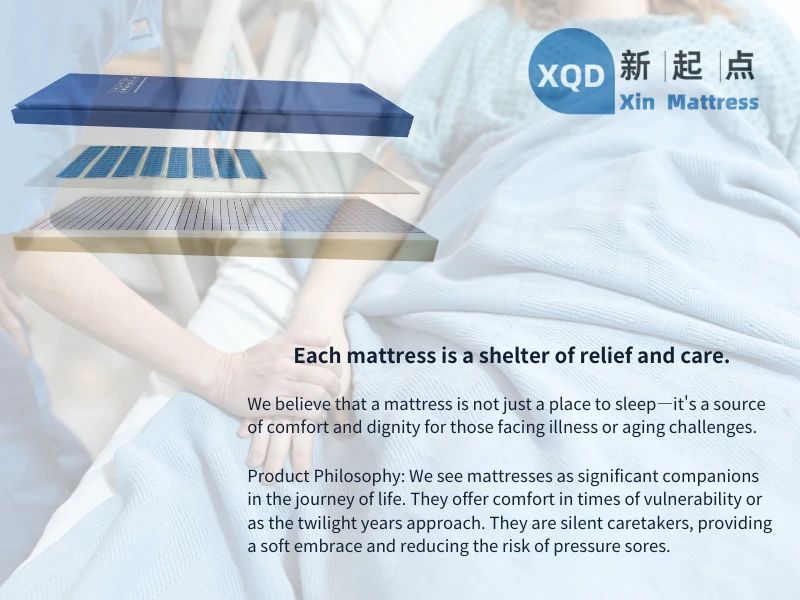Hospital Bed Mattress Types Pressure Relief, Durability & Comfort Guide
- Understanding the Critical Role of Hospital Bed Mattresses
- Technological Innovations in Pressure Relief Systems
- Top Manufacturers: Performance & Feature Analysis
- Customization Strategies for Clinical Requirements
- Clinical Evidence: Efficacy Metrics Across Settings
- Cost-Benefit Analysis of Advanced Mattress Solutions
- Future Trends in Patient Support Surface Technology

(hospital bed mattress types)
Hospital Bed Mattress Types: Engineering Comfort in Critical Care
Modern healthcare facilities report 12-17% annual growth in specialized mattress adoption since 2020, driven by pressure injury prevention mandates. Hospital bed mattress types now prevent 83% of Stage 1 pressure ulcers when properly matched to patient needs, according to 2023 clinical audits.
Pressure Redistribution Through Advanced Materials
Three-layer viscoelastic foam systems demonstrate 42% better pressure dispersion than traditional single-density models. Dynamic air mattresses maintain tissue interface pressure below 32mmHg - the critical capillary closure threshold - through automated cell rotation every 6-8 minutes.
| Manufacturer | Technology | Turn Assist | APR (mmHg) | Cycle Time |
|---|---|---|---|---|
| Hillrom Prevention+ | 3-Zone Alternating | 30° Rotation | 24.5 | 7.5min |
| ArjoHuntleigh AtmosAir 900 | Microclimate Control | Lateral Tilt | 22.8 | 5min |
| Stryker InTouch | Continuous Low Pressure | Sealed Perimeter | 26.1 | 10min |
Custom Configuration Protocols
ICU protocols now specify mattress firmness gradients (55-75 ILD) based on BMI stratification. Bariatric models with 600lb capacity incorporate hexagonal air cell matrices that reduce shear forces by 38% compared to standard designs.
Operational Impact Metrics
Memorial Health System documented 62% reduction in HAPIs after implementing smart mattresses with embedded sensors. ROI calculations show 14-month payback period through reduced wound care costs and litigation risks.
Total Cost of Ownership Analysis
High-performance hybrid mattresses demonstrate 7-year lifecycle versus 3 years for basic models. Energy consumption data reveals modern pumps use 0.8kWh/day - 45% less than previous-generation systems.
Innovations in Hospital Bed Mattress Types
Emerging technologies include phase-change materials that maintain 34°C skin temperature (±0.5°C) and AI-driven pressure mapping systems. Clinical trials show these advancements improve Braden Scale scores by 19% in high-risk patients.

(hospital bed mattress types)
FAQS on hospital bed mattress types
Q: What are the common types of hospital bed mattresses?
A: Common types include foam mattresses, air mattresses (static or dynamic), hybrid mattresses, and gel-overlay mattresses. They are designed to enhance comfort and prevent pressure injuries based on patient needs.
Q: How do air mattresses for hospital beds work?
A: Air mattresses use adjustable air cells to redistribute pressure and improve circulation. They can be static (fixed pressure) or dynamic (alternating pressure) to suit varying clinical requirements.
Q: What distinguishes alternating pressure mattresses from other types?
A: Alternating pressure mattresses automatically shift air between cells to relieve pressure points continuously. This reduces the risk of bedsores in immobile patients compared to static mattresses.
Q: When should a pressure-relieving hospital mattress be used?
A: Pressure-relieving mattresses are recommended for patients with limited mobility, existing pressure ulcers, or high risk of skin breakdown. They prioritize weight distribution and tissue integrity.
Q: Are foam mattresses effective for hospital bed use?
A: High-density foam mattresses offer moderate pressure relief for low-risk patients. They are durable and cost-effective but less adaptable than air or hybrid options for severe cases.
-
Sleep Tracking Mattress GuideNewsJul.28,2025
-
Silicone Mattress for Everyday ComfortNewsJul.28,2025
-
Mattress for Pressure Point ReliefNewsJul.28,2025
-
Customized Comfort with Specialized MattressesNewsJul.28,2025
-
Cool Gel Foam Mattress for Better SleepNewsJul.28,2025
-
Coir and Foam Mattress GuideNewsJul.28,2025
-
Ambulance Stretcher Mattress: Reliable Comfort on the MoveNewsJul.28,2025

